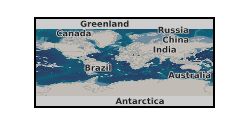MS word
Type of resources
Topics
Keywords
Contact for the resource
Provided by
Years
Formats
Representation types
Update frequencies
-

Triple-sulfur isotope data from schists and carbonates in the Eoarchean Isua Greenstone Belt (3.7 Ga), using a new leaching technique and a multi-collector ICP-MS. The results reveal distinct pattern between the two lithologies and demonstrate an atmospheric contribution of sulfur in both cases. This may support the notion that these rocks represent metamorphosed marine sediments. However, hydrothermal alteration needs to be assessed in more detail to verify the antiquity of these signatures.
-

Supporting data from paper: Hill et al. 2019 Evolution of jaw disparity in fishes. Palaeontology 61: 847-854. The data consists of two files: (1) an Excel spreadsheet listing the taxa used in the study, specimen number, clade, age; (2) a Word document outlining the data collection and analysis procedure used in the study.
-

This data comprises various transmitted and reflected light microscopy images, scanning electron imagery, chemical mapping (energy dispersive X-ray spectroscopy), and crystallographic mapping (electron backscatter diffraction) of basalt samples. Basalt cores were taken from the Reykjanes Ridge in the North Atlantic Ocean, during IODP Expedition 395C at four sites, U1554, U1555, U1562, and U1563.
-

This dataset contains the collated wireline logs, stratigraphy and core analysis of the three boreholes drill as part of the publicly funded Rapid Global Geological Events Project (RGGE) which ran between 1995-1998. The aim of the RGGE project was to identify the effects of climatic changes on modern sediments. The project focused on the Kimmeridge Clay due to its unbroken sequence of fossiliferous marine mudstones. These mudstones have compositional variations in organic content, minerology, fauna and clay content which reflect changes in both the climate and sea level. Over the course of the project the entire sequence of the Kimmeridge Clay was cored across three boreholes, two at Swanworth Quarry and one at Metherhills.
 NERC Data Catalogue Service
NERC Data Catalogue Service